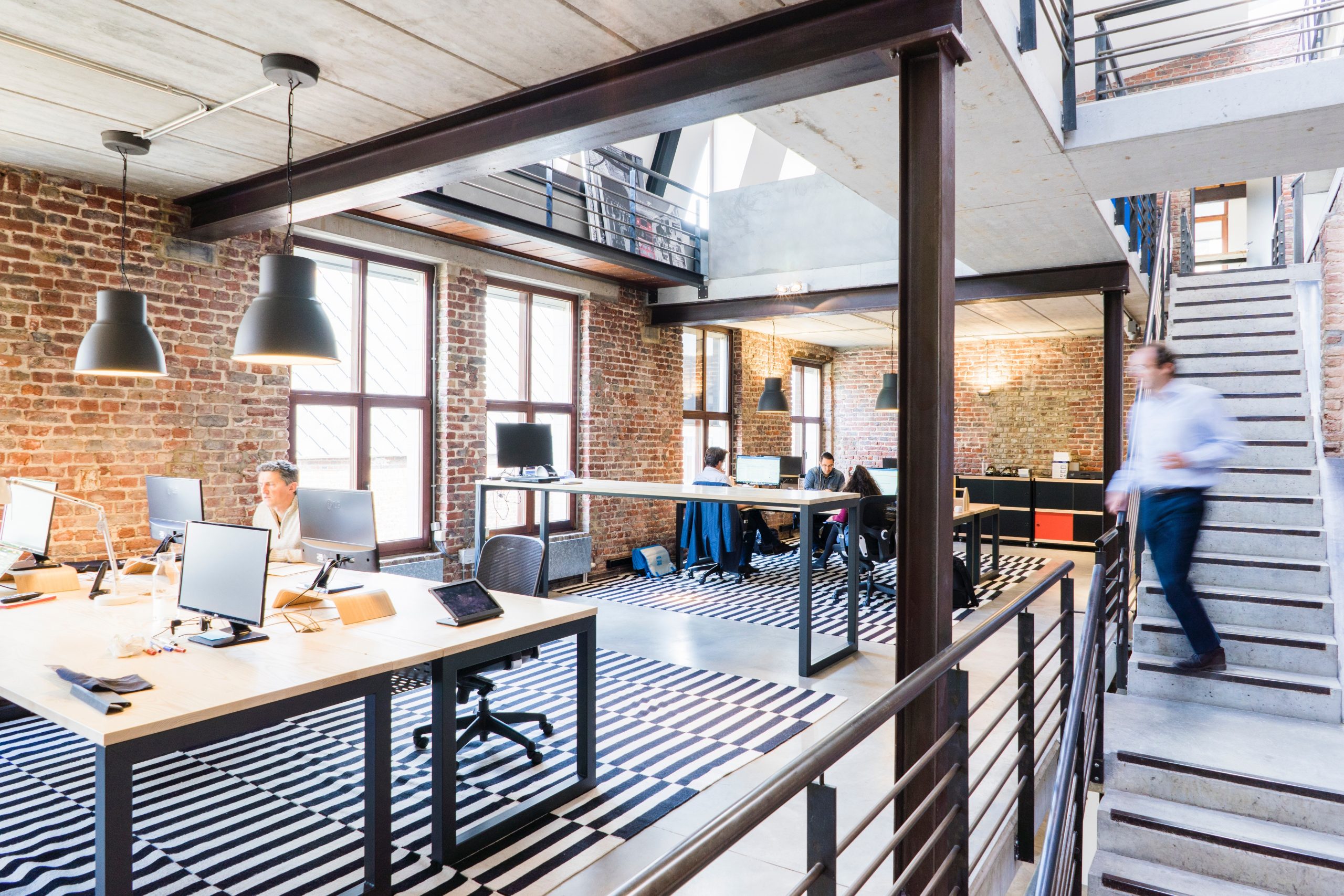Recent research revealed that 72% of office workers from 10 countries around the world want to keep working at home post-COVID-19, mostly for around two days a week1. With this in mind, plus workers changing expectations in socially distanced working, traditional office spaces are set for big changes in the future. The main trends we anticipate to see in these types of properties include:
Quiet Working Areas
Something which many people struggle to have whilst working from home. These could include partitioned off solo working spaces, perhaps separated by glass screens, with access to natural light and windows to allow for ventilation. These areas should also be made soundproof so workers can comfortably take audio and video calls.
Hotwalls
With the increase in home working alongside physical offices, businesses will need to ensure colleagues who aren’t regularly in the office can easily communicate with those on-site. Experts predict in communal areas of office space we will see ‘Hotwalls’ which will be a large screen connected to an always-on camera that easily connects to those working from home. These will be used for more social calls rather than business meetings.
Open Plan Spaces
Social distancing is set to continue into 2021 and many Brits have become accustomed to this extra space, so designers will need to make sure this is considered when developing office spaces in the future. Open-plan offices will become increasingly popular as they allow more room for socially distanced desks and commuting around the space itself. Within these open spaces, creating an area where people can come together for collaborative working will be essential, so large meeting tables with connectivity and plug in stations will be key.
Open Breakout Areas
Experts anticipate that traditional stuffy enclosed meeting rooms will give way to more open breakout areas that can provide space for meetings of all sizes. Temporary partitions will become more popular as a way to create individual spaces as and when they are required, rather than permanently breaking up space. Access to windows for ventilation will also be key when creating these temporary meeting areas.
Sustainable Design
Similar to home design trends experts expect to see in 2021 and beyond, this will carry over into office spaces as employees push for businesses to improve their eco-friendly ways of working. Creating an eco-friendly designed office is the first step and is a great way to showcase commitment to looking after the planet. Sustainable designs will incorporate reclaimed wood and sustainable materials, as well as aim to reduce energy consumption and improve existing waste management systems.
Recreational Space
After spending so much of their time at home in 2020, when employees return to the office they will come to expect spaces that allow them to engage in more recreational activities during their lunch breaks. Businesses should look at how they can incorporate these into their existing spaces with the introduction of more relaxed and comfortable seating areas, potentially games consoles, books, pool tables etc. as a way of reducing stress levels and encouraging creative thinking within their workforce.
Andrew Taylor, joint managing director at Specialist Glass Products said: “With a new year comes new trends and inspirations for the office. 2020 taught us many things and it’s certainly altered how we live our lives both at home and at work. Functionalities of workplaces have evolved and so have employees’ needs, so it’s important that organisations pay attention and make changes to their office space.
“We’re really excited about some of the upcoming trends in office design for 2021 and beyond and think they will all encourage us to focus more on our health and wellbeing at work as well as create more comfortable spaces for staff, making workplaces more accessible and in line with home design.”







